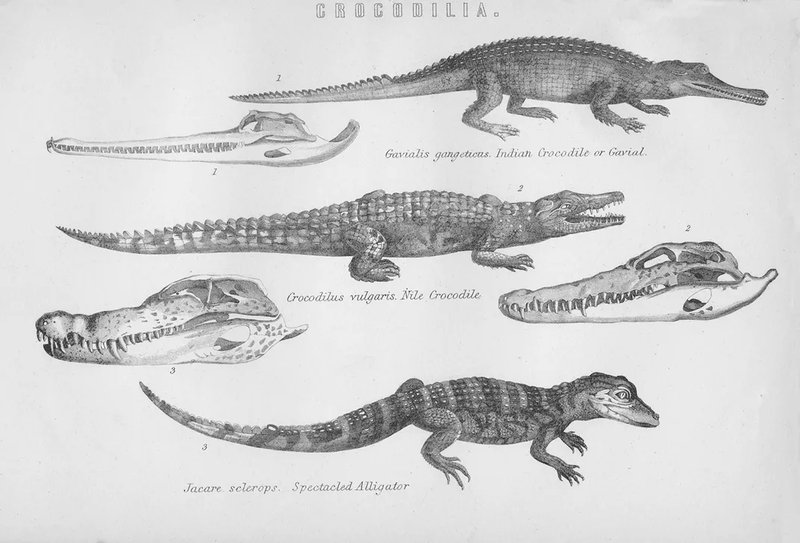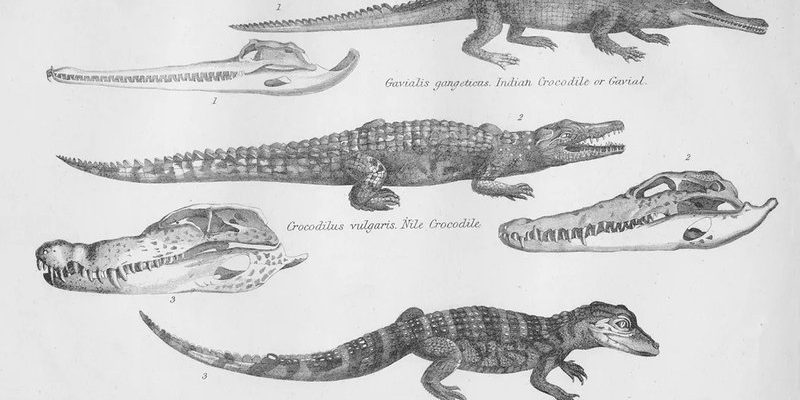
Now, when we talk about the evolutionary history of the crocodile, we’re diving deep into a world that has shaped not just these reptiles, but also the environment around them. From their early ancestors to the modern-day crocodiles we see today, this journey involves countless adaptations that have made them successful predators. Let’s explore how these creatures evolved over time, revealing some surprising twists in their lineage.
Crocodilian Lineage: A Snapshot of the Past
To get a clear picture of how crocodiles came to be, it’s important to look back at their ancestors. Crocodiles belong to a group called crocodyliforms, which first appeared around 250 million years ago during the Triassic period. These early ancestors were more diverse than today’s crocodiles and occupied a variety of ecological niches.
Imagine these prehistoric creatures as versatile players in an ancient ecosystem. Some were small and agile, while others grew to immense sizes. Their adaptability meant they could thrive in land as well as water. You might be wondering why this diversity matters, right? Well, it set the stage for the evolution of modern crocodiles, allowing them to weather quite a few ecological storms over the millennia.
By the time the dinosaurs roamed the Earth, crocodilians had already carved out their niche. They developed many of the features we recognize today, such as a powerful jaw and a tough, scaly hide. This evolutionary journey shows us how adaptability can lead to survival, something crocodiles have mastered over time.
The Age of Dinosaurs: Crocodiles Find Their Place
During the Mesozoic era, which lasted from about 252 to 66 million years ago, crocodiles stood side by side with dinosaurs. Picture this: the land dominated by massive dinosaurs, while crocodiles ruled the waters. They were not just lurking in the depths; some even ventured onto land.
In fact, some crocodilian relatives, like the Deinosuchus, grew to be bigger than most dinosaurs. These creatures were ferocious, adapting to a predatory lifestyle that allowed them to target large prey. It’s almost like they were the ultimate survivalists of their time, right? This era cemented their role as top predators in their aquatic environments, showcasing their prowess and adaptability.
The extinction of the dinosaurs about 66 million years ago led to significant changes in the ecosystem. While many species vanished, crocodiles persisted, proving their resilience. Here’s the thing: their ability to adapt and survive in varied habitats is a testament to their evolutionary success.
Surprisingly, crocodiles are often called “living fossils.” They’ve changed little over the past tens of millions of years. While many species went extinct during significant events, like the mass extinction that wiped out the dinosaurs, crocodiles had the advantage of their semi-aquatic lifestyle. This adaptability allowed them to find refuge in water when land became inhospitable.
Isn’t it interesting that these reptiles have seen the world change around them? New species of crocodiles evolved during epochs like the Eocene and Oligocene, reflecting shifts in climate and environment. For instance, some of these early crocodiles could be spotted in places like Europe and North America. As climates shifted and continents drifted apart, these crocodilians adapted.
Throughout their history, they faced competition and environmental changes, but their evolutionary traits—such as their strong jaws and powerful tails—allowed them to remain effective predators, showcasing their resilience. Imagine trying to navigate a sea of challenges while remaining grounded in what makes you effective—that’s exactly what crocodiles did!
Modern Crocodiles: Lineage and Diversity
Today, we have around 15 species of crocodiles, and each has its unique adaptations that suit their habitat. From the iconic American crocodile to the elusive Siamese crocodile, these modern species exhibit remarkable traits.
Let’s break it down a bit. Crocodiles are primarily divided into three families: Crocodylidae (true crocodiles), Alligatoridae (alligators and caimans), and Gavialidae (gharial and false gharial). Each family has distinct features. For example, the long, slender snout of the gharial is designed for catching fish, while the powerful jaws of the Nile crocodile are perfect for tackling larger prey.
You might be surprised to know that crocodiles can also live in different environments, from swamps and rivers to coastal regions. Their physiological and behavioral adaptations allow them to thrive in their specific habitats. They’re not just survivors; they’re specialists, showcasing the beauty of evolution across generations.
The Role of Crocodiles in Ecosystems
Crocodiles are more than just formidable predators; they play a crucial role in their ecosystems. By controlling fish populations and other aquatic animals, they help maintain balance in their habitats. Think of them as nature’s regulators, ensuring that the animal kingdom remains in harmony.
When they hunt, they often take larger prey from the water, which can allow smaller fish populations to thrive and prevents overgrazing of aquatic plants. This balance contributes to healthy ecosystems. Without crocodiles, you could see a significant shift in these environments, affecting countless other species.
It’s fascinating to consider how a creature so ancient can be so integral to a modern ecosystem. Understanding their role helps us appreciate how interconnected life is on this planet.
The Future of Crocodiles: Conservation Challenges
As we look ahead, crocodiles face numerous challenges, mostly driven by human activities. Habitat destruction, climate change, and poaching contribute to declining populations. We’ve seen some species, like the Siamese crocodile, become critically endangered.
Conservation efforts are crucial now more than ever. Organizations are working to protect habitats and educate people about the importance of these reptiles. Let me explain: safeguarding the future of crocodiles means preserving a piece of our ecological history.
We must acknowledge how our actions impact their survival. By supporting conservation initiatives and protecting their habitats, we can help ensure that these ancient creatures continue their evolutionary journey. After all, every species plays a part in the tapestry of life, and losing crocodiles would mean losing a thread woven through millions of years.
Why Understanding Crocodilian Evolution Matters
So, why should we care about the evolutionary history of crocodiles? Beyond sheer curiosity, studying their evolution allows us to understand the broader principles of adaptation and survival. These ancient reptiles have witnessed changes that have shaped our world, and their story is a mirror reflecting the fight for existence in the animal kingdom.
Understanding their history can aid in conservation efforts. By knowing how they’ve adapted over time, we can better assess what they need today to thrive in a changing world.
Think of it this way: every time we learn about these magnificent creatures, we gain insight into not just their lives, but the environment we share with them. Crocodiles remind us of resilience, adaptation, and the importance of every species in maintaining ecological balance.
In conclusion, the evolutionary history of crocodiles is a testament to nature’s power to adapt and survive. As we learn more about them, we celebrate not just their existence but also the intricate web of life in which they play a vital role. Protecting them isn’t just about saving an ancient species; it’s about preserving the history of life itself.

